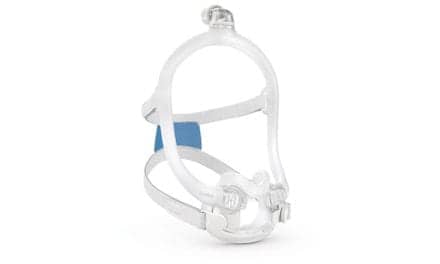Ensuring comfort and mobility can result in accurate diagnosis and proper treatment for patients with severe obesity and sleep apnea.
By Russell Rozensky, BS, RRT, CPFT, RPSGT; and Thomas Smalling, MS, RRT, RPSGT, RPFT, FAARC
Obesity in the United States is becoming a major healthcare problem, not only because of its complications associated with morbidity and mortality, but also for the burden obese patients place on the health care system. Most patients are not aware of the processes associated with diagnostic and therapeutic polysomnographic studies. The level of patient monitoring and preparation is both comprehensive and time-consuming.
The minimum criteria used to evaluate sleep disordered breathing (SDB)1 is an electroencephalogram (EEG), electrooculogram (EOG), electromyogram (EMG), electrocardiogram (ECG), respiratory parameters (airflow, chest, and abdominal effort), pulse oximetry, and limb activity. Having a patient who is able to assist with the setup is valuable, but not critical. Challenges to testing extremely obese patients arise, particularly in the areas of ambulation into and around the sleep laboratory or moving into/from the bathroom.
Managing severely obese patients with suspected sleep disordered breathing presents a number of challenges and concerns. Patient comfort, for instance, is as important an aspect of the diagnostic regimen as the diagnosis itself. If the patient is unable to get comfortable during the study, then sleep efficiency will be reduced and/or the number of spontaneous arousals will be higher than expected. Both circumstances can alter the outcome of the sleep study and make proper interpretation of the results more difficult. Many sleep centers or laboratories design their facility to look more like a hotel room or suite than a diagnostic testing facility to improve patient comfort and the likelihood of achieving valid outcomes. The patient testing area should be of adequate size to fit a bed, closet, nightstand, and other accoutrements to make the room appealing to the patients. Obviously, that includes a bed that is appropriately sized for the laboratory’s patient population. If, for example, the laboratory performs pediatric or neonatal sleep studies, a crib fitted with rails for patient safety is an absolute necessity. If the laboratory performs sleep studies on extremely obese adults, a bed large enough to accommodate the patient is necessary.
There are other factors to consider with the bed as well, such as maximum allowable weight capacity. The mattress or box springs might be able to handle the excess weight, but what about the bed frame? An option would be to get a “big boy” bed. This is, in essence, a queen-sized, hospital-grade bed that can handle weight capacities up to 1,000 pounds. Another option is to use an oversized recliner (space permitting) that allows the patient to transfer more easily and may improve comfort in patients who cannot tolerate lying completely on their back or side. Obese patients with severe SDB might sleep at home in a recliner or chair, and having the option of larger rooms with a recliner and a queen-size bed would benefit the facility as it would offer the ability to test the patient under a “normal” night’s sleep. Family members or caregivers that normally stay with severely obese patients to care for them should not stay in the room during the study, as this may disrupt the patient’s sleep pattern and compromise study results.
There are also concerns about managing the ambulatory needs of severely obese patients within the sleep laboratory. Extrawide wheelchairs with capacities of 600 pounds are one option for dealing with these concerns. These wheelchairs should also fold up for easy storage. The laboratory also must have ample space for the patient to travel around and to transfer from chair to bed or from chair to toilet. The laboratory doors need to be oversized to accommodate the chair, and there should also be handrails that facilitate the transfer of the patient from chair to toilet. It may be worthwhile for the laboratory to invest in an Americans with Disabilities Act (ADA) consultant. ADA consultants can survey or inspect the sleep laboratory and perform in-depth inspections, audit reports, and accessibility surveys to ensure compliance with ADA requirements.
With obstructive sleep apnea (OSA) being very much associated with obesity, there are situations where positive airway pressure (PAP) therapy will be implemented for treatment. Continuous positive airway pressure (CPAP) is the most used form of PAP therapy, and is the standard for treating patients2 with OSA, but bilevel therapy might be indicated under certain circumstances for treatment of the patient’s disorder. Patient preparation is the key to a successful titration.
To begin, the patient should be educated as to what OSA is. Most patients are naive about the disorder, and some actually deny that they suffer from it. The signs and symptoms, such as excessive daytime sleepiness, weight gain, loud snoring, night sweats, morning headaches, and poor work performance, are what brought the patient to the sleep clinic, but patients need to be educated as to how OSA will increase their risk for hypertension, stroke, myocardial infarction, etc. By understanding what OSA is as well as knowing the long-term effects on health, the patient will be more likely to try therapy as well as continue to use therapy.
Next, clinicians should review the prior polysomnogram for specific data. This data will give an overall quantitative result of how “poor” the patient’s sleep truly is. What was the total bed time, total sleep time, sleep efficiency? This will indicate the accuracy of the data. If the patient slept only for 30 minutes out of 300 minutes, the data might be swayed due to lack of time in specific stages of sleep (REM or slow wave sleep). The arousal index will indicate how fragmented the individual’s sleep is. The higher the number, the more fragmented the individual’s sleep will be. Usually, this will also correspond to the patient’s Epworth Sleepiness Score (ESS).3 The ESS is a subjective measure of “how tired” the patient is.
In the authors’ opinions, insurance companies and patients tend to think the apnea/hypopnea index (AHI) is the most important, but all elements of the evaluation are relevant and must be viewed as such. A person with an AHI of 15 is viewed by most physicians and insurance companies as “mild to moderate,” while a person with an AHI of 50 is viewed as “severe.” Notice, there is nothing commenting on the average length of the patient’s apneas or hypopneas. The person with an AHI of 50 has an average event of only 12 seconds, but the patient with the AHI of 15 has events lasting 90 seconds. Patients (and sometimes physicians) will need to be educated as to how this translates into the severity of the disorder. Now that the overall quality of the prior sleep study has been taken into account with the AHI, arousal index, percent and time in different stages of sleep, limb activity, and level of desaturations, the clinician can focus on the therapeutic side of the equation. The patient should be evaluated for the treatment options. If the AHI is “relatively low,” a nasal PAP mask usually works, but some other areas need to be evaluated.
Next, the clinician should discuss with the patient (as well as observe) how the patient breathes and ask some important questions such as “Do you have a deviated septum, nasal polyps, postnasal drip; are you a mouth breather; do you wake up with a dry mouth?” How the patient breathes while sitting there talking will give a good indication as to what type of mask to consider, but this is not the only tool to use. We always recommend using the “big picture” and look at many different aspects of the patient as well as the sleep disorder. What size is their neck? Do they have enlarged tonsils, adenoids, an elongated uvula, or narrow pharyngeal inlet? (This should be in the history and physical examination provided by the physician.) Clinicians are treating the patient first and foremost, and if the patient is not comfortable with the mask, they will not wear it. Some of the patients are informed by the physician, friends, family members, and other sources about PAP masks. Patients might say that they want nasal pillows or a gel mask because they know someone with that type and it works for them.
With the patient’s prior sleep study and their overall physical attributes taken into consideration, the application of the PAP interface is next. Patients should be allowed to see the device and handle it and be given an explanation of how it is applied to their face/head and how it will seal around their nose (and mouth, if needed). They should be instructed about what a leak will appear like and to point to where they think a leak is, so they do not open their mouths. A patient may feel uncomfortable with the air going into the nose and out of their mouth, so a proper seal is crucial to the success of the titration. The pressure to start should be at a comfortable level for the patient, but should not be less than 3 cm H2O. This is to blow out the CO2 that builds up and the water vapor that the patient exhales. If the patient needs more pressure due to difficulty inhaling, the pressure should be raised until the patient is comfortable. If the patient has difficulty exhaling at a high pressure, a trial of bilevel therapy is appropriate. The nose provides three basic, yet important functions. It heats, humidifies, and filters the air. The PAP unit has a filter, so the addition of the heat and humidifier via heated humidifier in conjunction with titration will greatly add to the comfort of the patient. If a heated humidifier is not used, a patient can complain of either nasal congestion or nasal dryness, which could lead to nasal bleeds.
CPAP therapy is the most commonly used therapy for treatment of SDB.2 Efficacy of CPAP therapy can be easily tested and confirmed with an overnight titration. It does not require any alterations to patient care other than patient education. Bilevel is used for patients who do not tolerate “high” PAP pressures or suffer from other disorders that restrict or reduce tidal volume and lead to respiratory failure, such as obesity hypoventilation, structural deformities, or respiratory diseases (COPD).
While titrating patients, clinicians should monitor how the patient is sleeping (stage of sleep, body position, arousals, and respiratory events). Also, they should look at the patient’s respiratory rate, saturations, tidal volume, and overall effort. All should be within the “normal” range for that patient. A patient who is breathing normally, with normal saturations, will most likely have REM and slow wave sleep rebound. The patient will awaken feeling refreshed, both physically and mentally.
Dealing with patients who are obese can be challenging in many regards. For these patients, with their limited mobility, tolerating the treatment of PAP and patient education are crucial for their long-term health.
RT
Russell Rozensky, BS, RRT, CPFT, RPSGT, is clinical instructor, respiratory care program; Thomas Smalling, MS, RRT, RPSGT, RPFT, FAARC is clinical assistant professor, respiratory care program, School of Health Technology and Management, Stony Brook University, Stony Brook, NY.
References
- Chesson AL Jr, Ferber RA, Fry JM, et al. Practice parameters for the indications for polysomnography and related procedures. An American Sleep Disorders Association Report. Standards of Practice Committee of the American Sleep Disorders Association. Available at: www.aasmnet.org/PracticeParam.aspx
- Kushida CA, Littner MR, Hirshkowitz M, et al. Practice parameters for the use of continuous and bilevel positive airway pressure devices to treat adult patients with sleep-related breathing disorders Sleep. 2006;29: 375-80.
- Johns MW. A new method for measuring daytime sleepiness: the Epworth sleepiness scale. Sleep. 1991;14:540-5.









